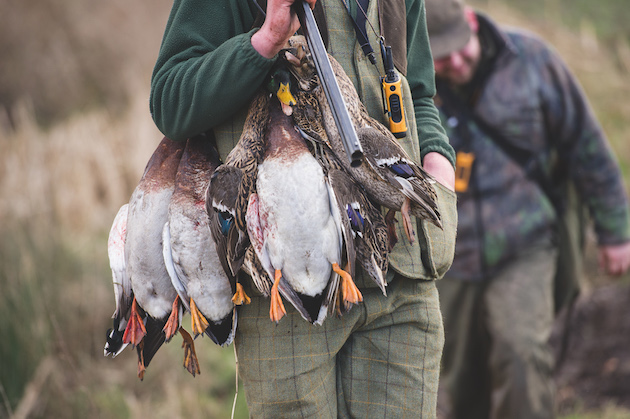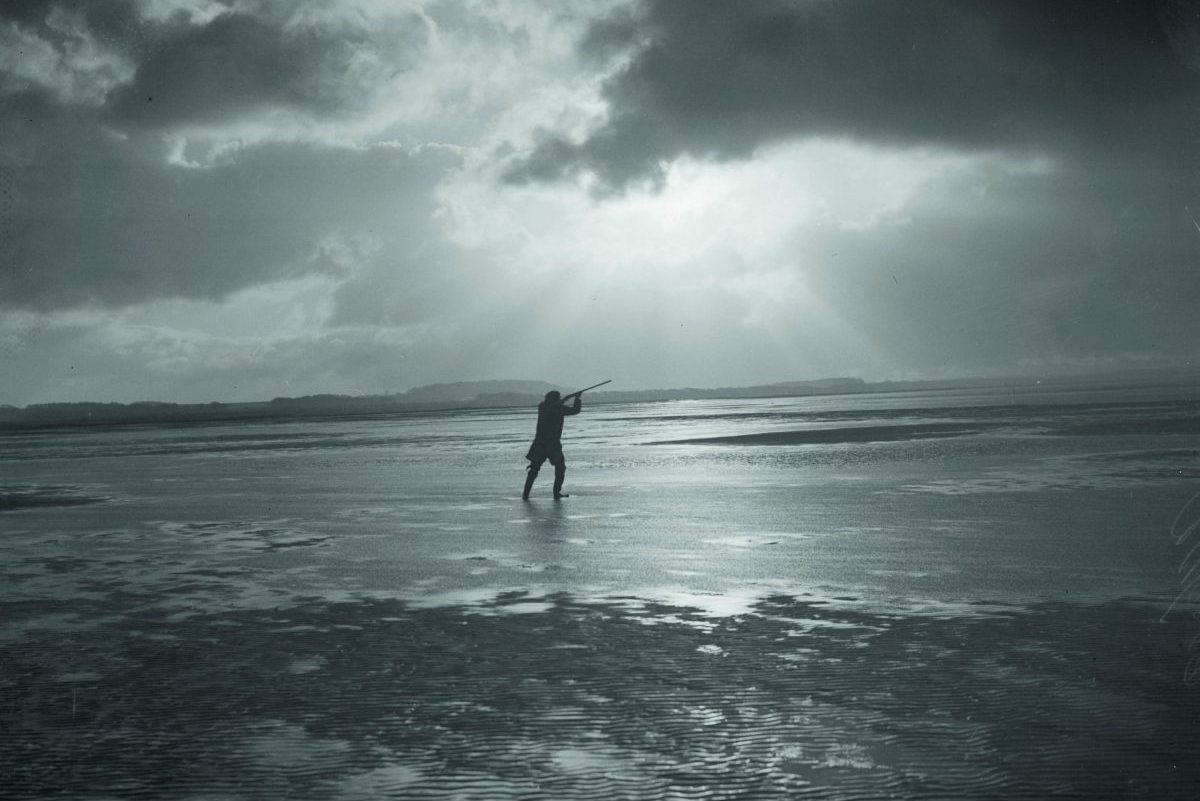Masters of the sky
There are a lot of people who turn their nose up at driven duck but done properly it is a glorious sight to behold, says Charles Grisedale

Duck must be a challenge but must also be in range for the Guns
Like many, I have occasionally been appalled and disgusted when duck have been on the menu on a shooting day. I will not go into detail.
What an absolute waste of such potential. Experienced Shots struggle at five cartridges per kill. It is not that they are out of range — you will be warned not to do that — it is because they are a challenging target. Duck will change height and direction at the flick of a primary feather if they see you, hear shooting or for any other duck reason. You must blend into your available cover, with minimum movement. Then pick the best possible targets.
I have always dug ponds, creating habitat for waterfowl, plants and insects. My first was at the age of seven, with my pocket money, for my Muscovy ducks, and I now have more than 100 pools under my belt.
It was a natural development that mallard and shooting would feature in my life. Forty years ago I bought mallard from game farms, then spent all August teaching them to fly. The only successful way was to walk them away from the pool and, with a dog or two, encourage return flight back to the pool, until free flight was achieved. If that failed, sewelling and black umbrellas often featured — anything to get them airborne.
Now there is another issue: polluting wild stock with mongrels.

Young mallard, one in 3000 ducklings is hatched white
The right colour
I started hatching my own from this stock but at least 15% were totally the wrong colour. The eggs were also miscoloured. There was a clue here. For many years we have overcome these problems, breeding from correctly coloured mallard, only using drakes and hens that have survived the shooting season by their flying abilities. Pretty well every wild duck that flies over west Wales calls in here.
The breeding flock run as one, with a field, running water and a clean, strawed shed to lay in, with six hens per drake. Top-quality feed produces top-quality eggs that are picked and washed every day. They are set every Tuesday, hatching four weeks later. Where before 15% were the wrong colour, now one in 3,000 ducklings comes out white. If you breed these white together, they produce normal ducks. Eggs are now nearly all that lovely shade of green.
The ducklings are reared in hygienic, warm conditions, with clean, plentiful water and food. When they are 19 days old, if the weather is warm, they are released on to the water. People are surprised by this but think about wild hatched mallard; their down is waterproof at one day old, courtesy of their mother’s oil. At nine days old they produce their own.
Whatever age you release them, if they are overcrowded and dirty they will strip the covering off their backs and will not be waterproof. You can guess what the result will be.
Despite having more than 50 pools here at Cefngwyn, we only release on three areas. The first night I will leave the tractor running with the lights on, over the pool, just in case there is something about that eats duck. The second night they will all be roosting on the water. Other than otters and mink, no problem.

Having started to dig ponds at the age of seven, Charles now has more than 100 pools
Conservation
If you have otters, think about electric fencing. I am blessed in that I have a foxproof fence for my lapwings around 250 acres. It does not always work, but it helps. People who shoot here usually contribute towards lapwing conservation. The income I get from shooting means I can afford the conservation work I carry out.
Mistakes that can be made so far are buying ducks that are poorly bred or that are poorly feathered. The poults we supply are five weeks old. At that age they can stand any weather and have had 24-hour access to the outside world here.
The quicker they are on the water the better. Muscles are built through good food and exercise so those who keep them captive longer than five weeks are not helping them. A good-quality pellet is required until they are eight weeks old, on a dry bank. Do not put it in the water. It will go to mush and pollute the environment. From thereon mix the pellet and barley for a few days then straight barley or wheat in shallow water, where corvids cannot get it.
Now comes the potentially tricky part. Your boss is either going to be unhappy at ducks swimming about in front of the Guns or the reverse: ducks that are so jumpy and frightened that very few get shot at.

Duck must be a challenge but must also be in range for the Guns
A problem, of course, is that a good gamekeeper likes to see his charges every day, knowing they are safely at home and not being shot by someone else. My duck released at 19 days old, never short of food, become instantly wild.
By September every pool has duck on it, despite food only being available in approximately four areas. I am fortunate here; I have 50 or so pools, and am not worried that, once we start shooting, a goodly percentage may be miles away in the day. They will return at night.
I have very good neighbours. In the middle of, say, Hampshire, I cannot see this working where nearly every bit of ground is shot. Think of your duck as fighter pilots, going into battle. They need to be strong on the wing, able to dodge the enemy. If you shoot at them as poor fliers, they will never fly again. They are somewhat more intelligent than a pheasant.

A successful duck shoot is what the Guns are paying for; the difficulty is in getting it right
Speed and verve
If you deny them sanctuary by standing your Guns around their pool, you will lose them. If possible, have a second pool that they can fly to. If you overshoot them they will either leave you or refuse to co-operate. You cannot starve them into submission. When they are feathered, feed away from the pool to encourage them to fly back. Like any bird, they need to get airborne into the wind. Never put a dog in the water and expect them to leave it. They can outswim any dog.
With birds that are fit, well fed and confident on the wing, duck shooting is as good as it gets, as they fly with speed and verve — masters of the sky.
Charles Grisedale is a keen angler, deer stalker and forager and helps to run a wild bird rough shoot in Wiltshire.








